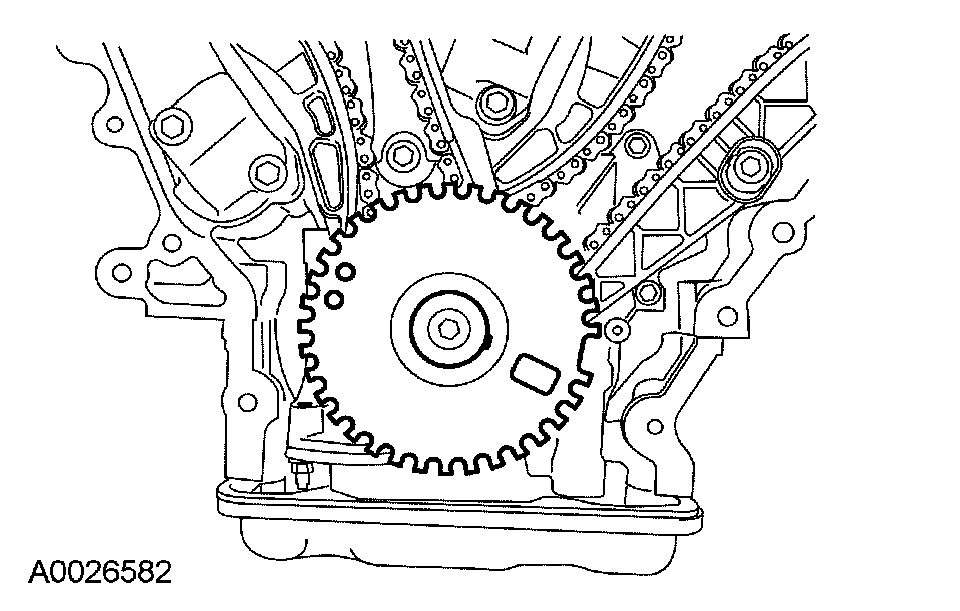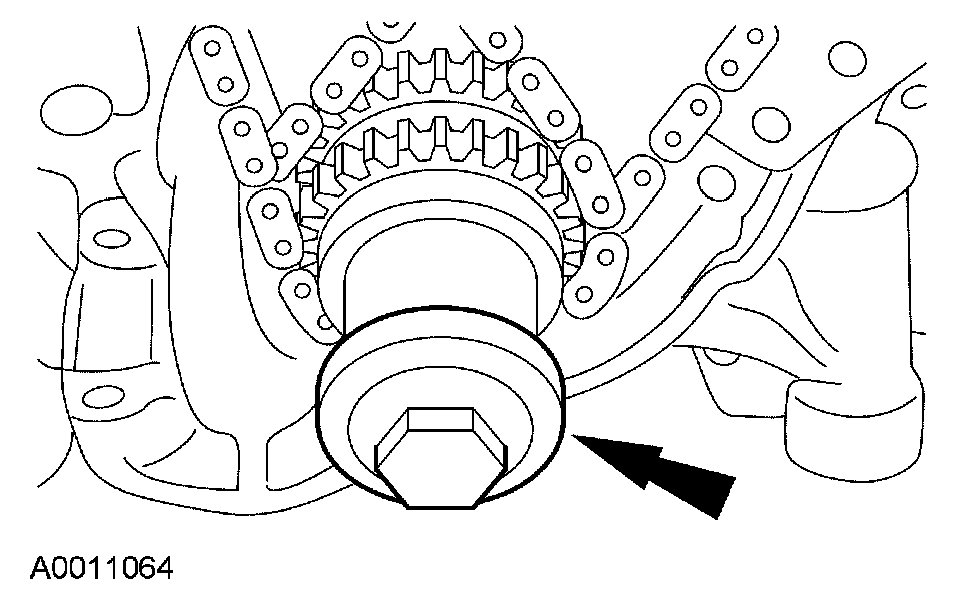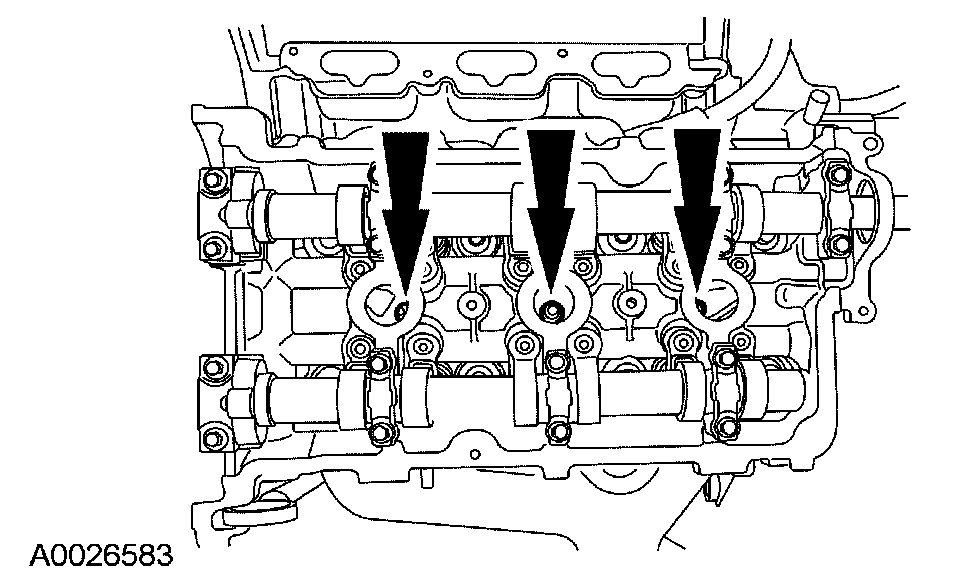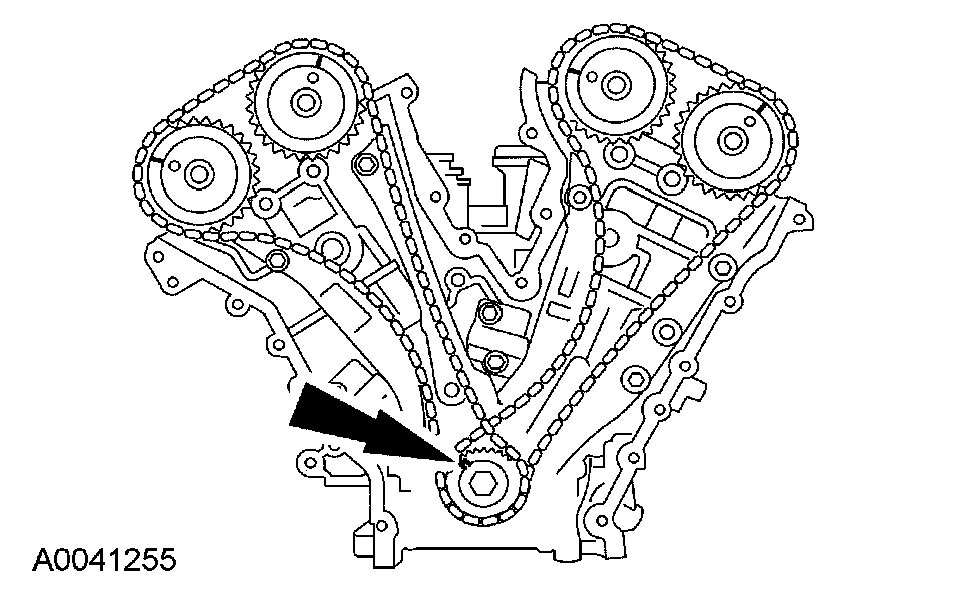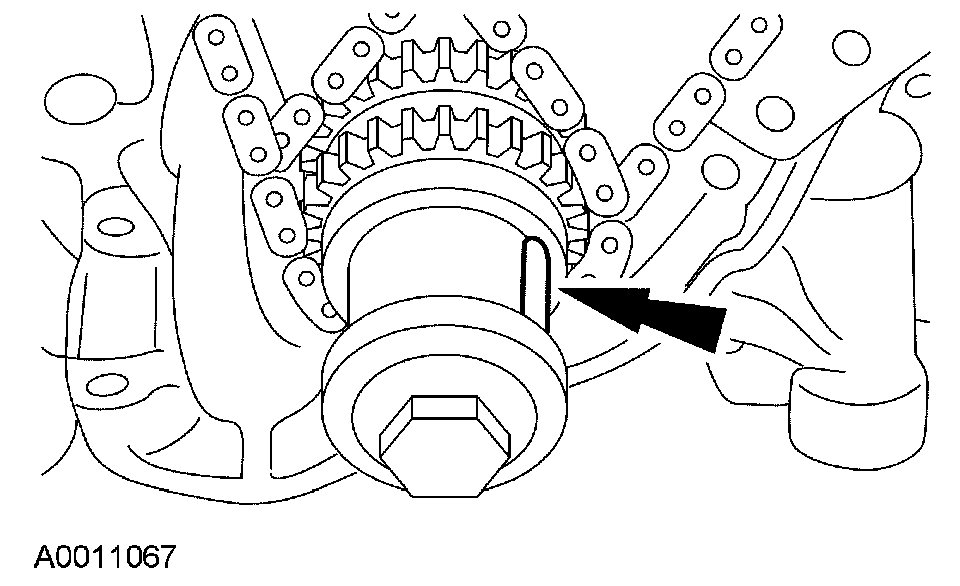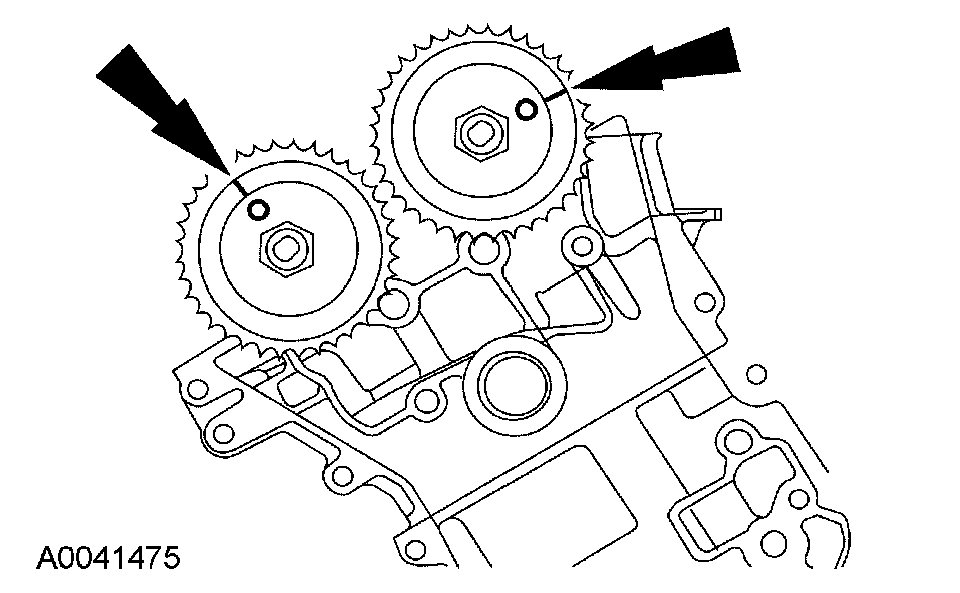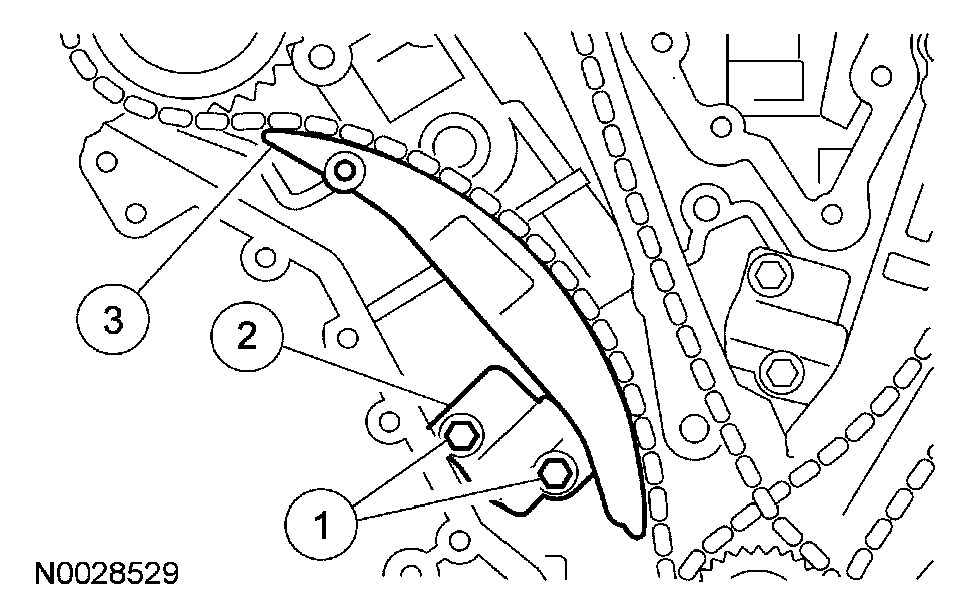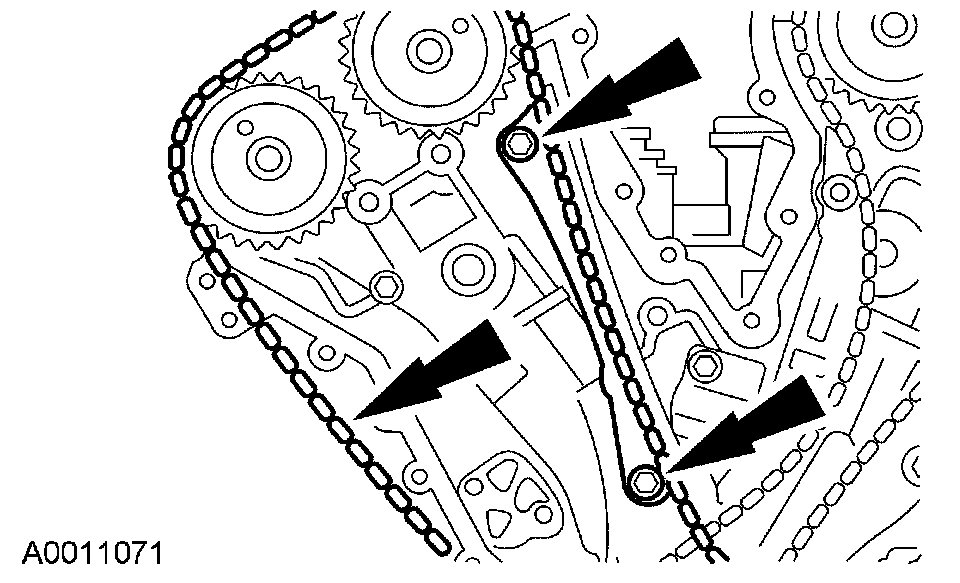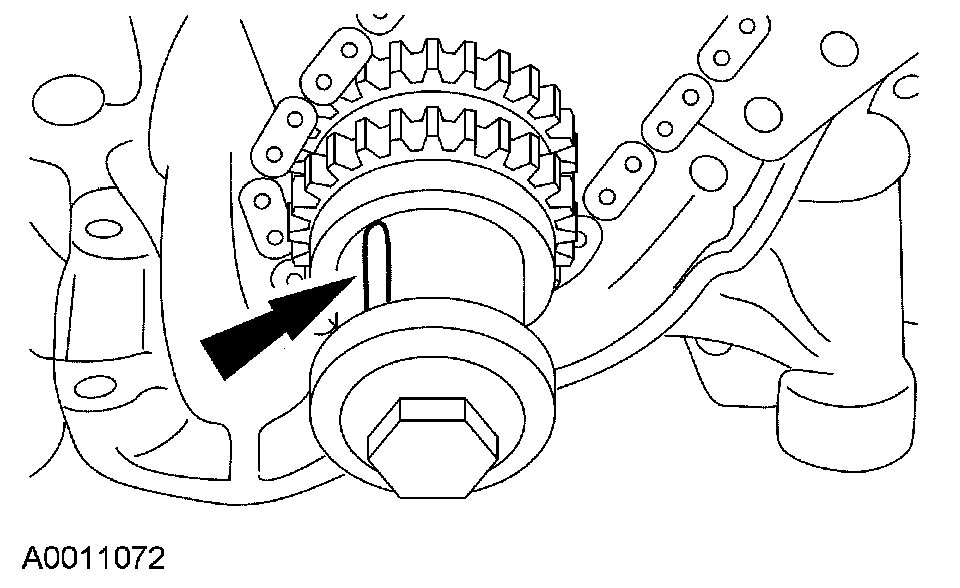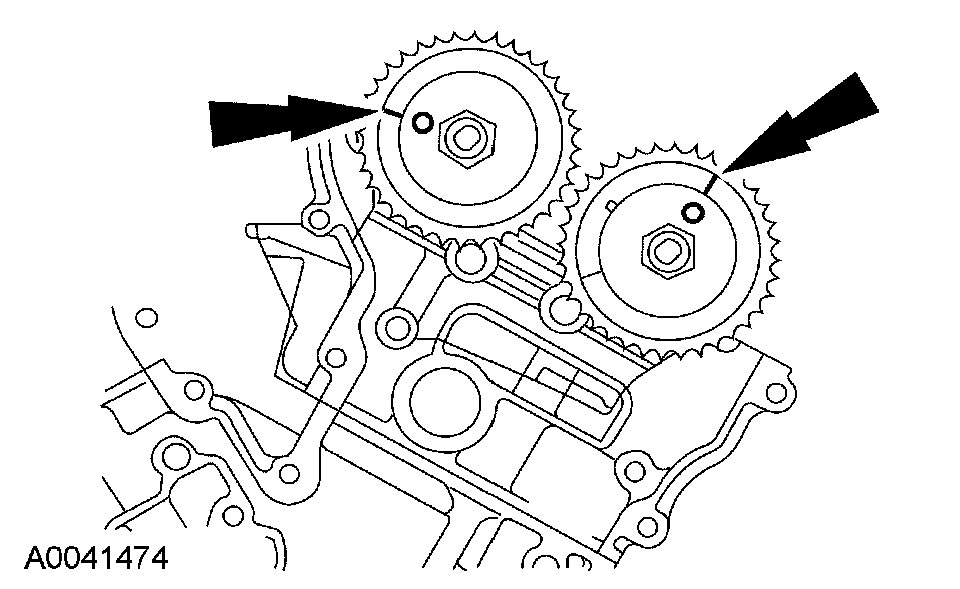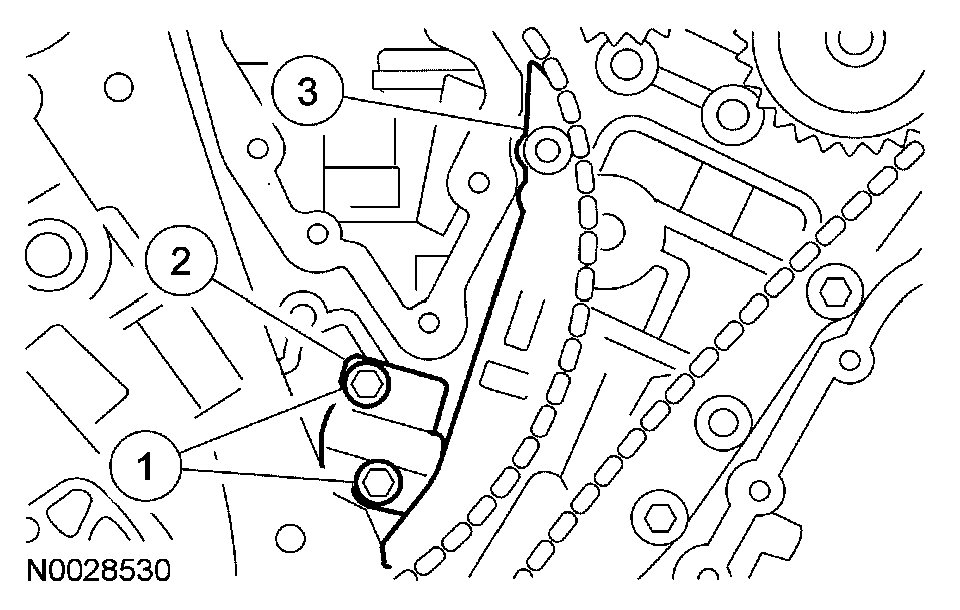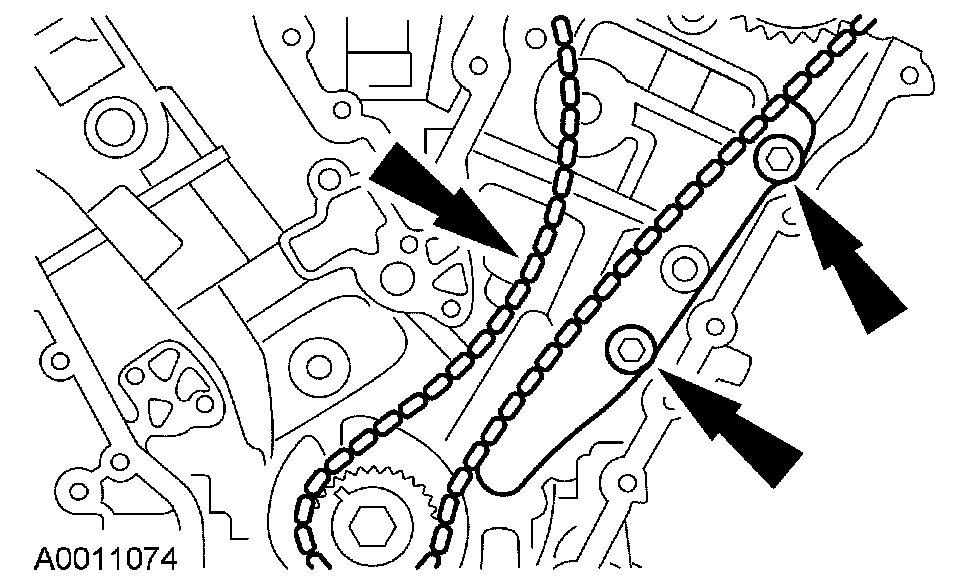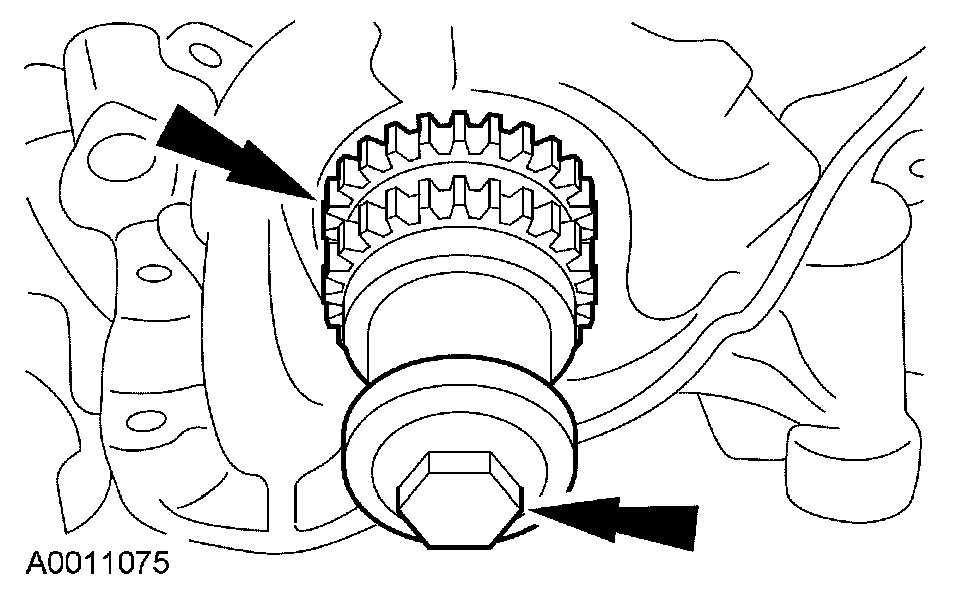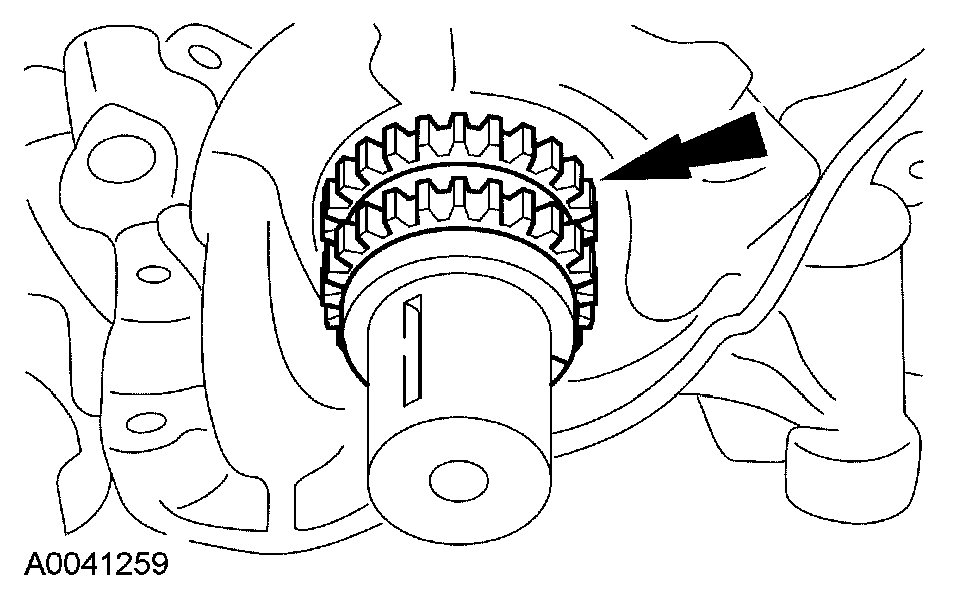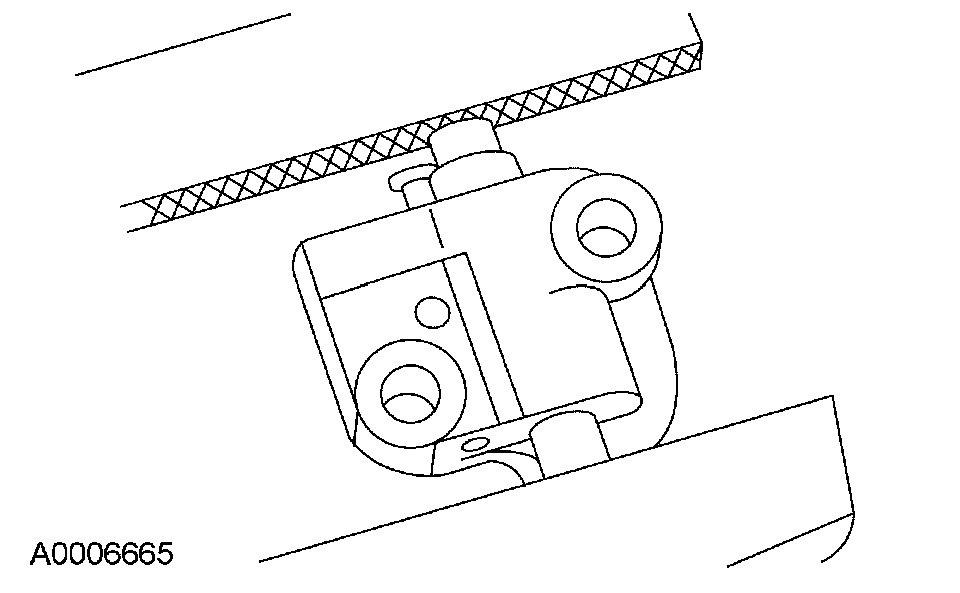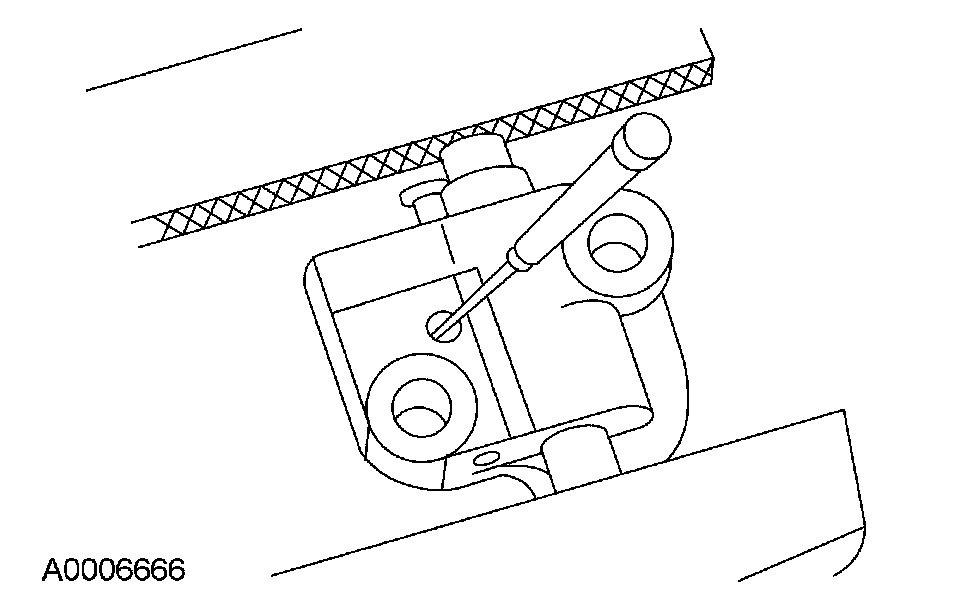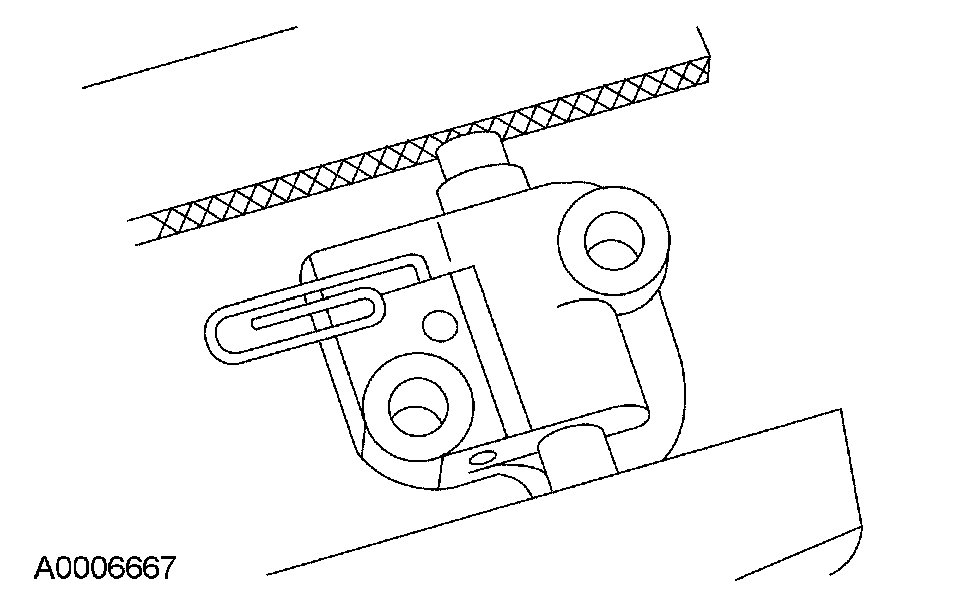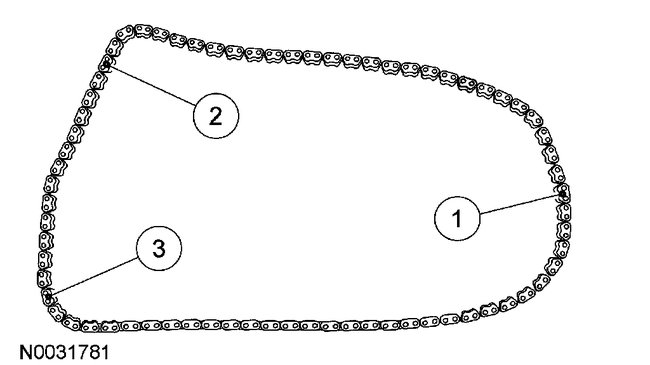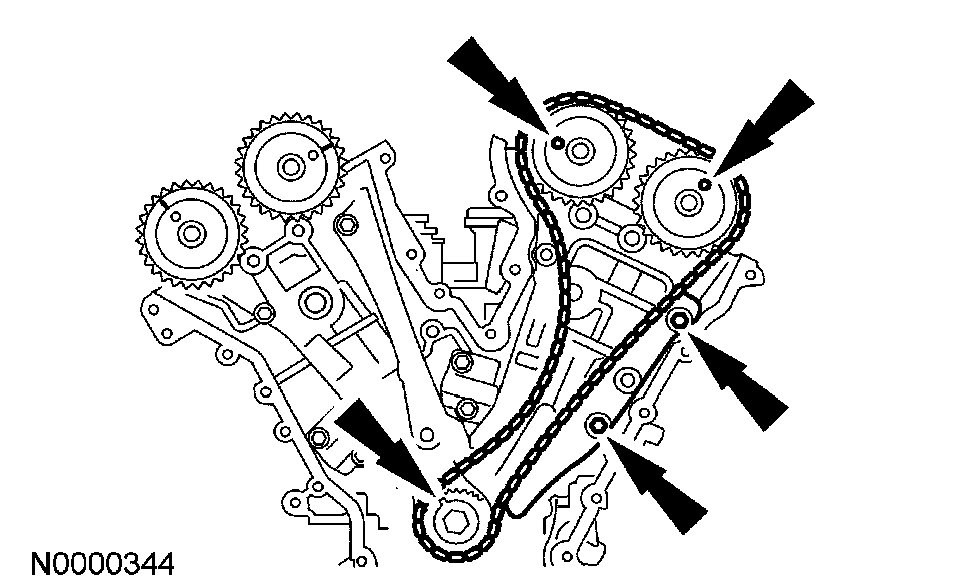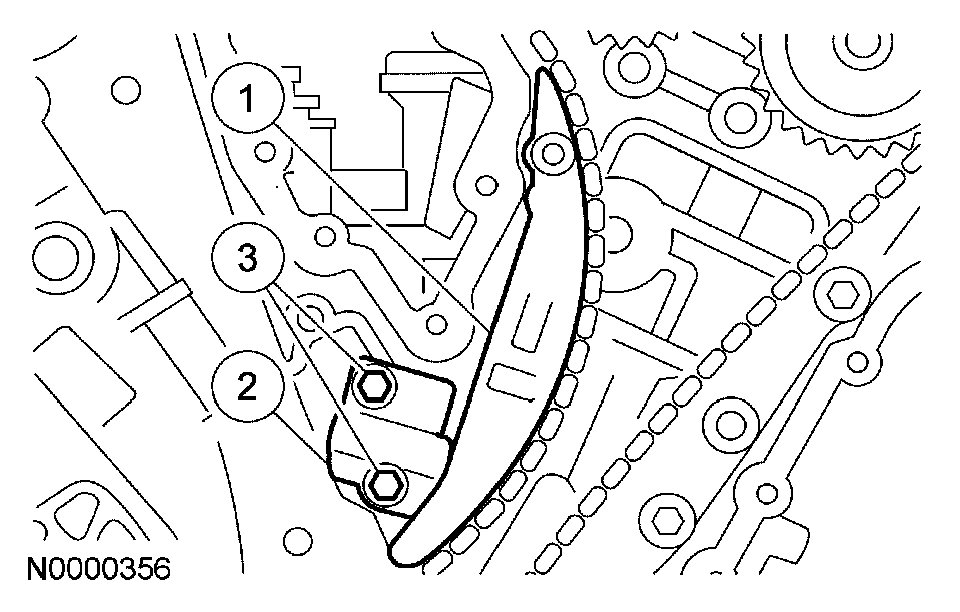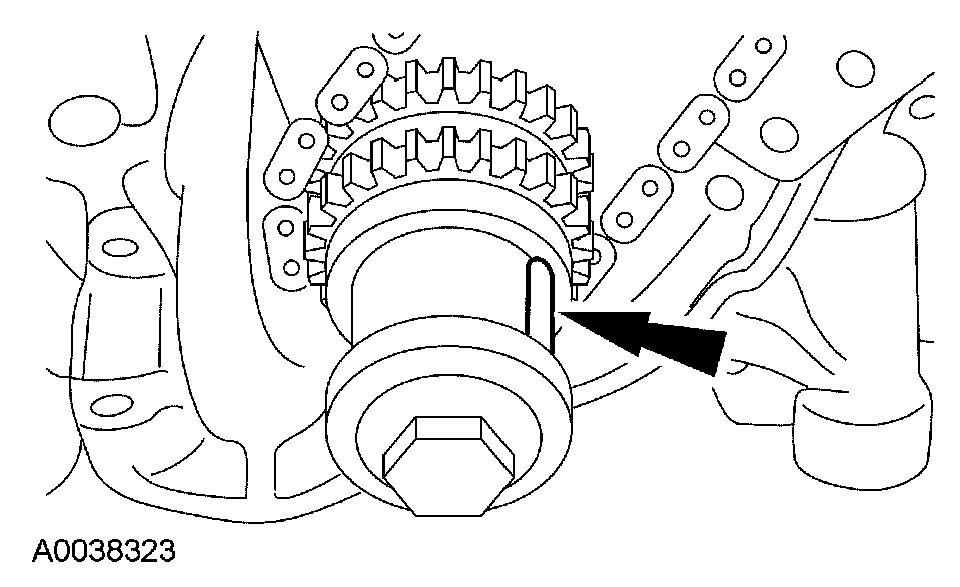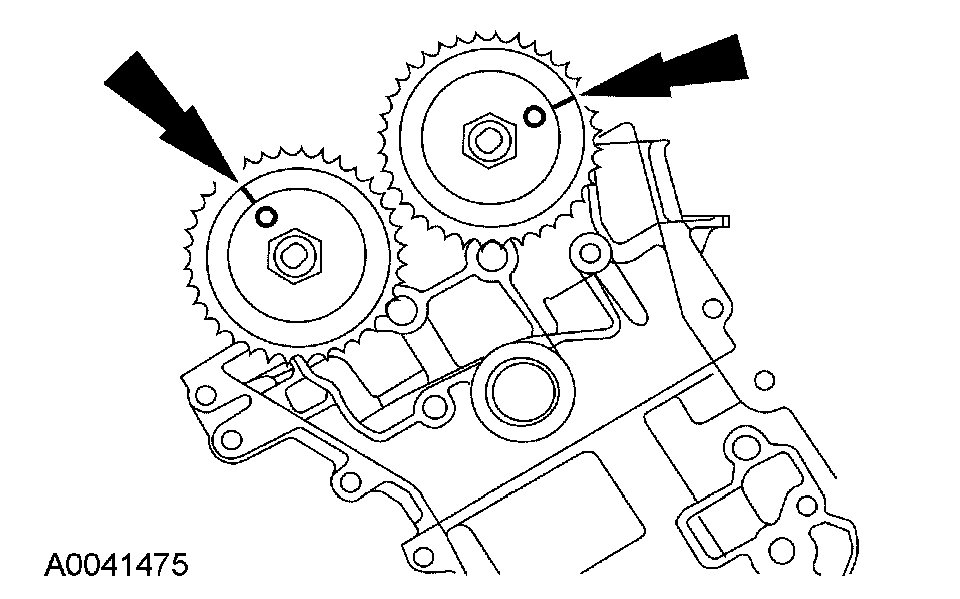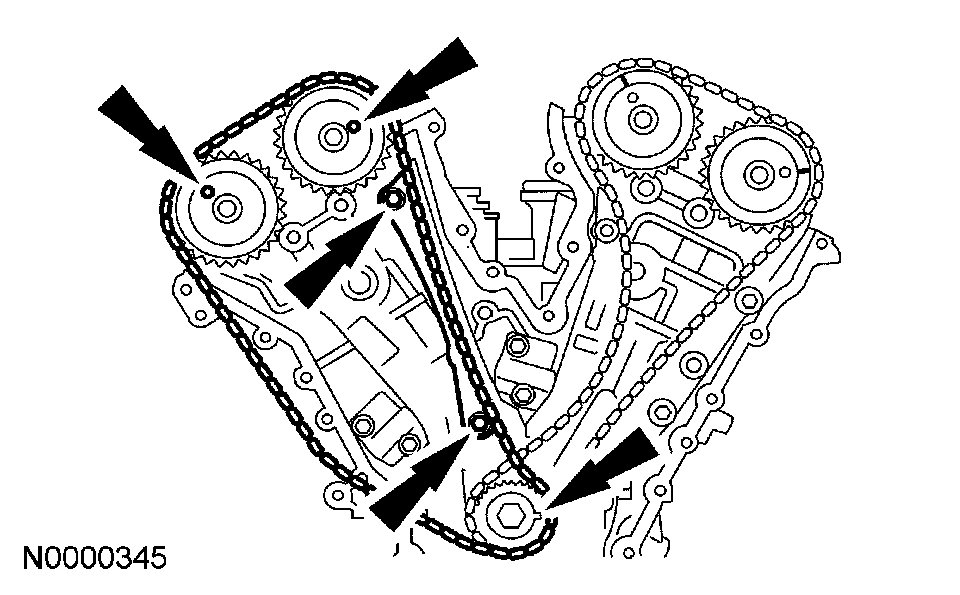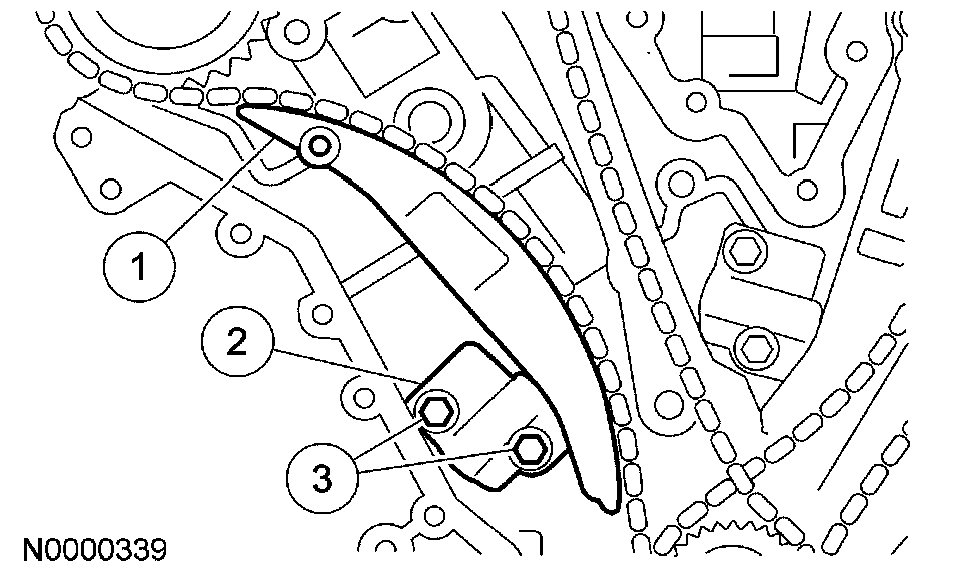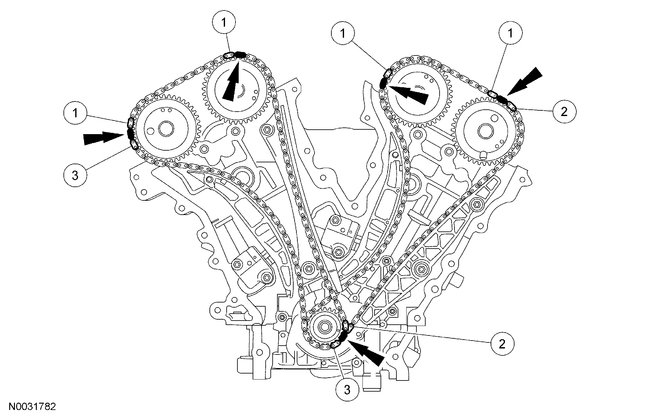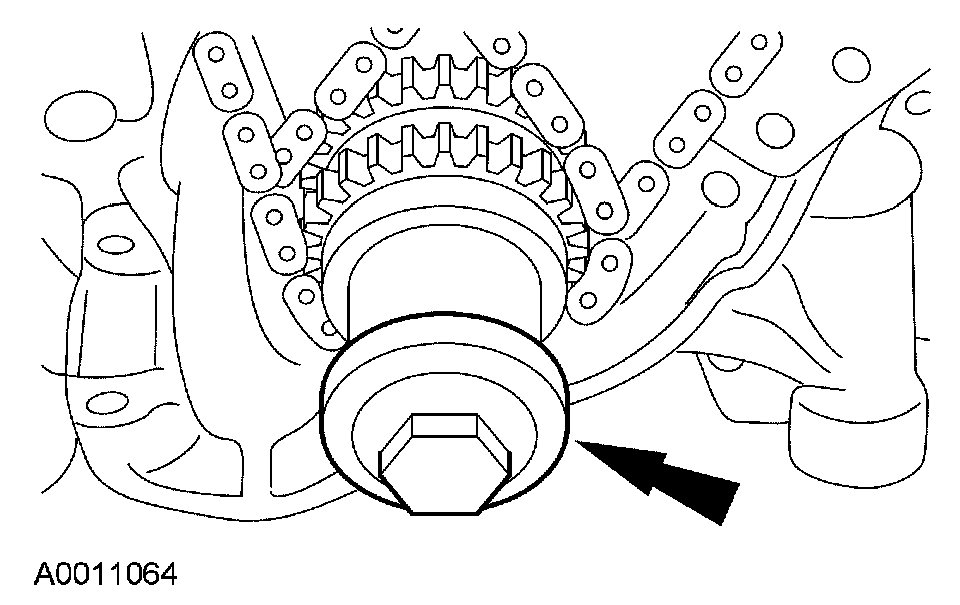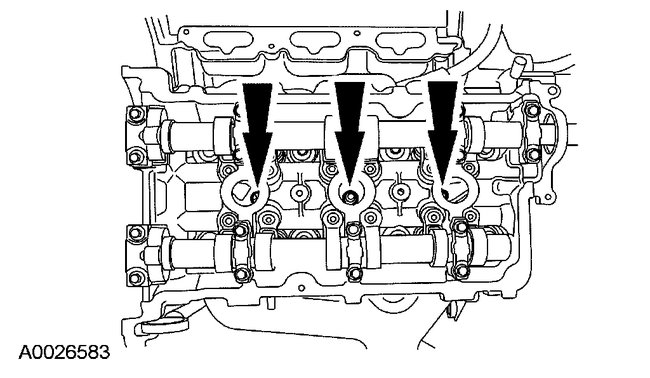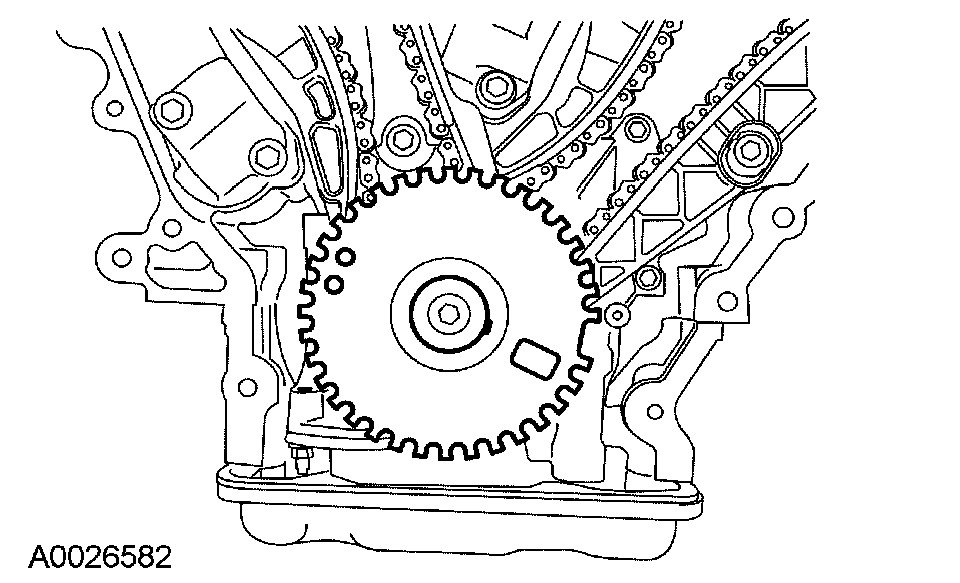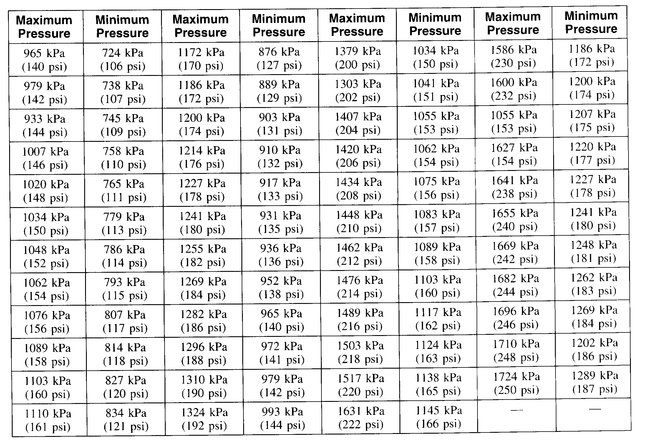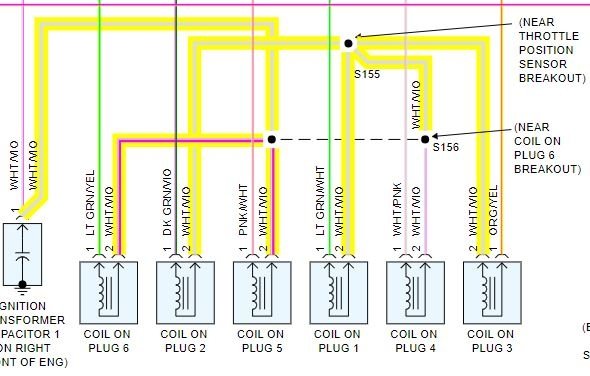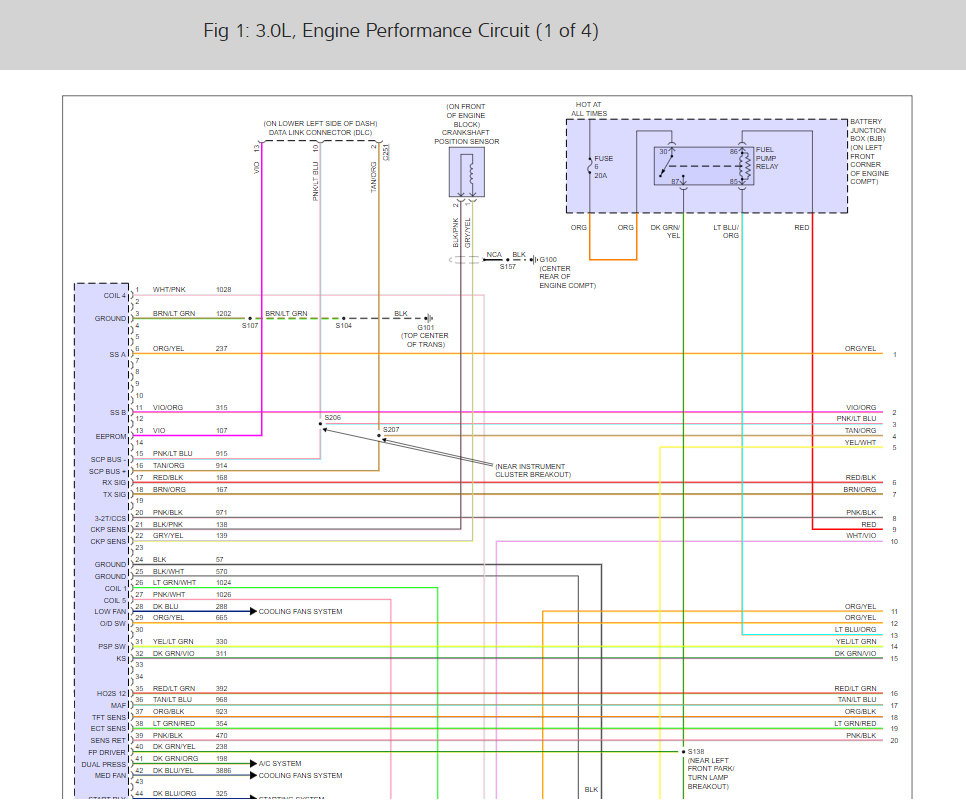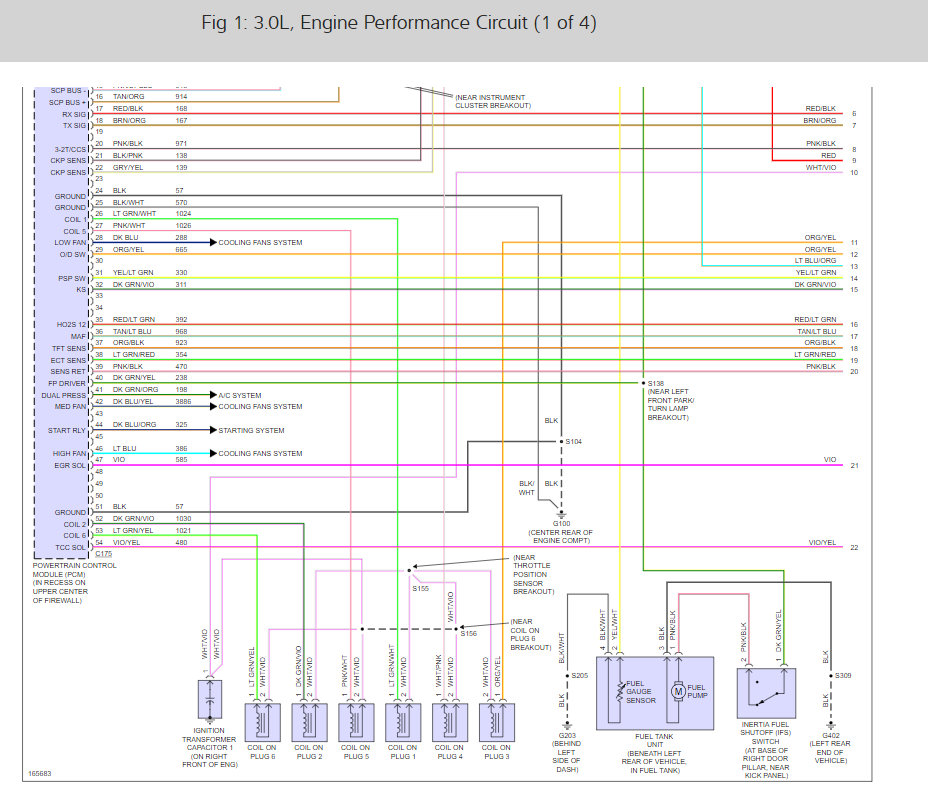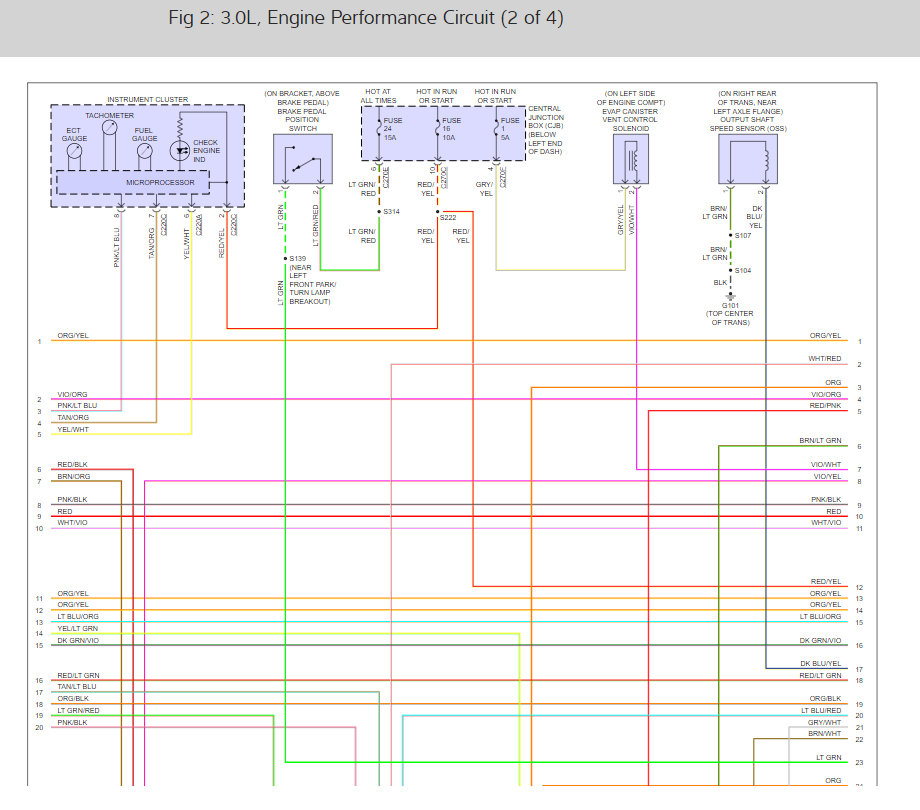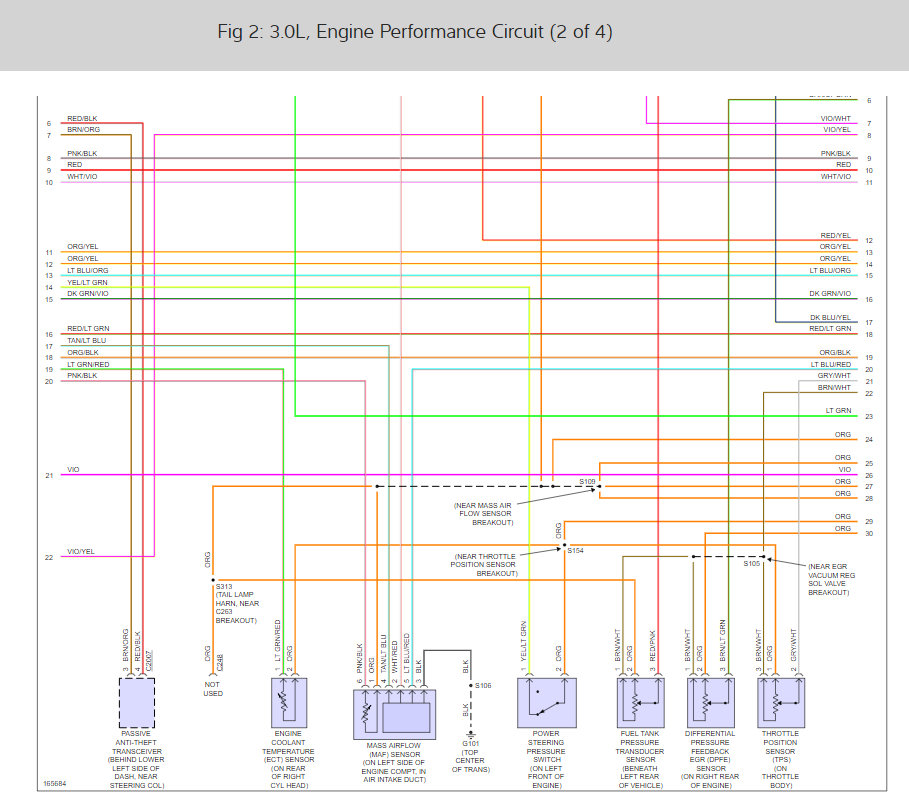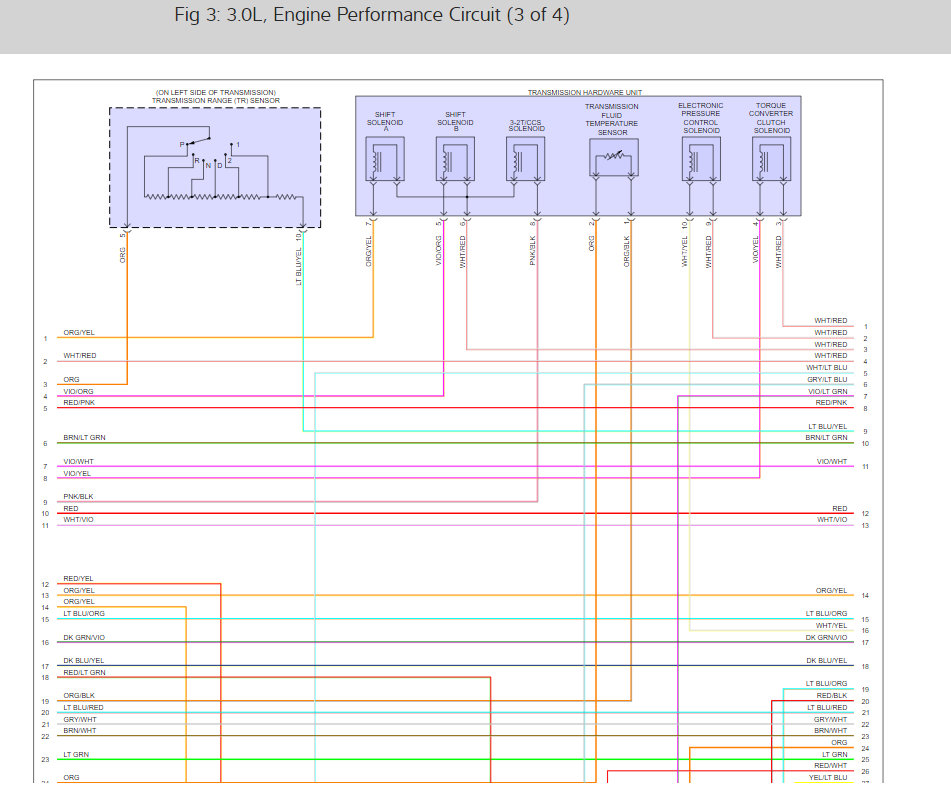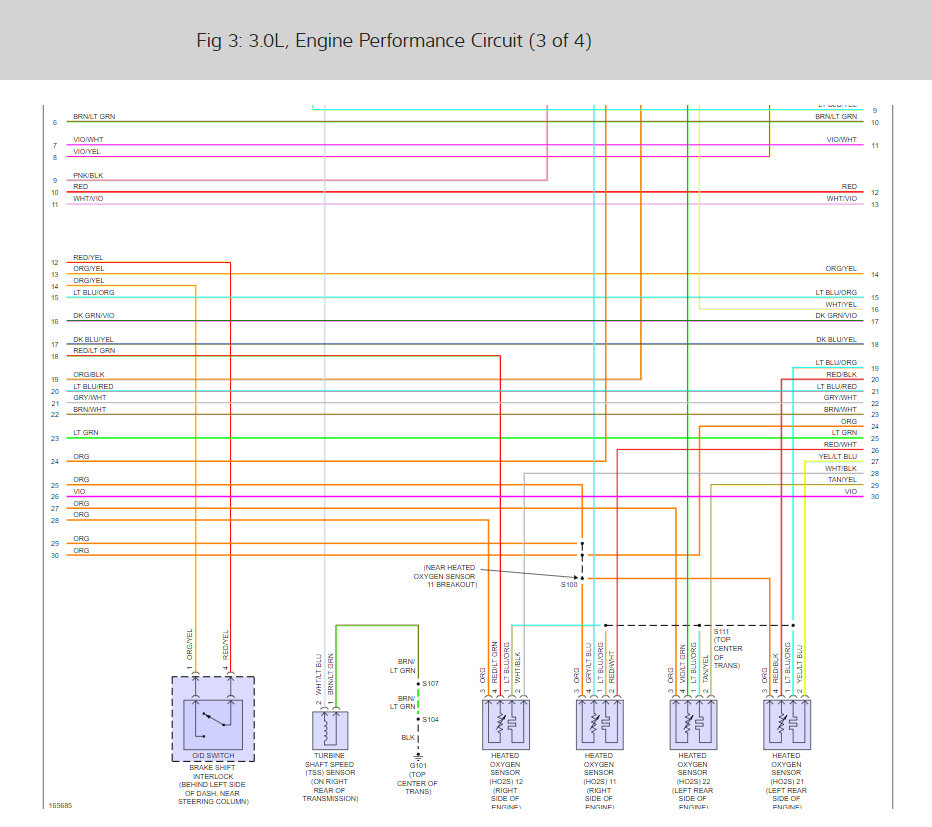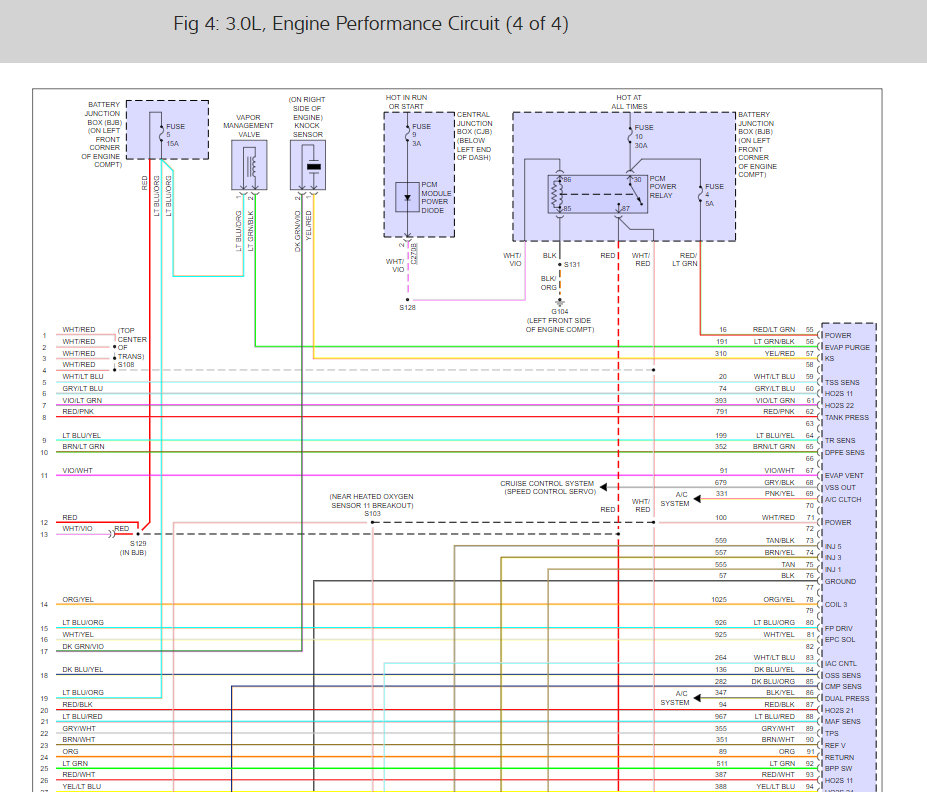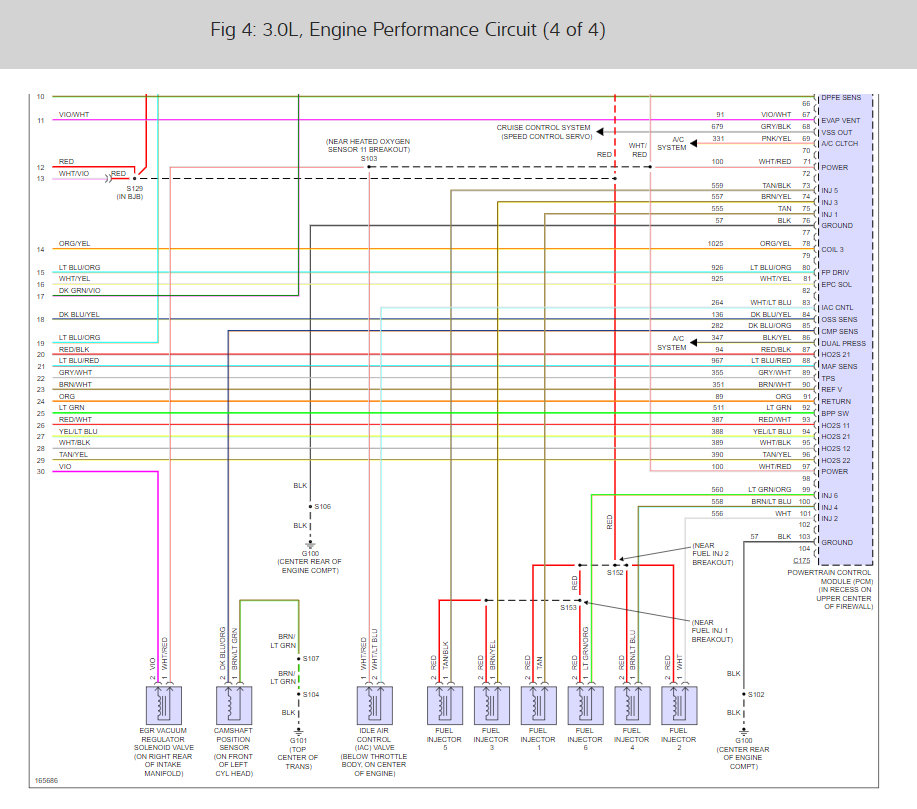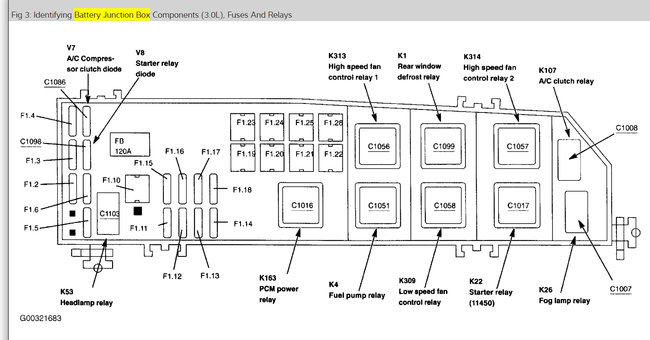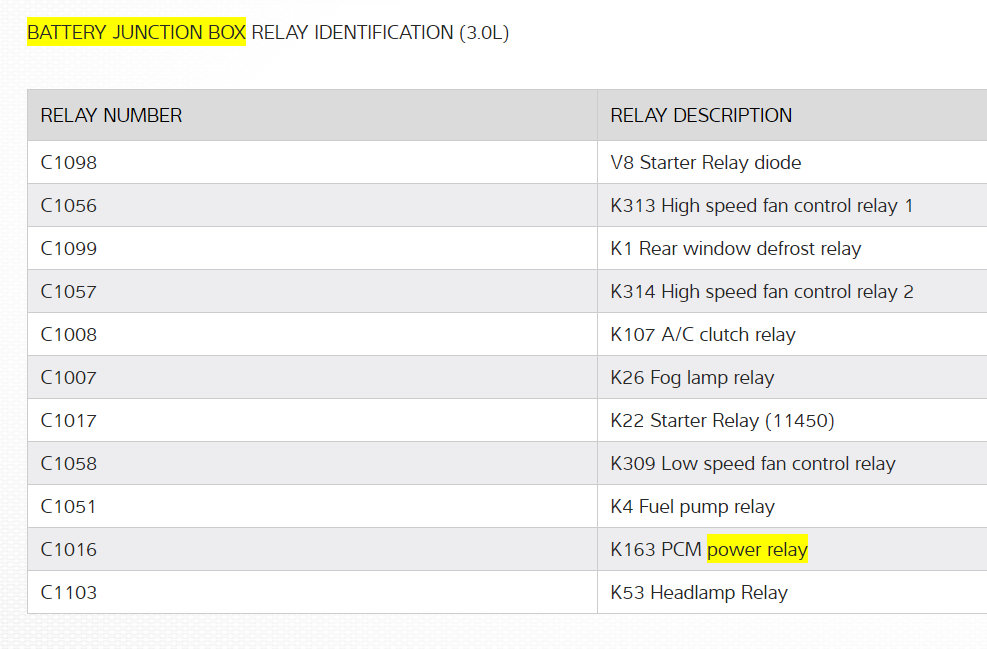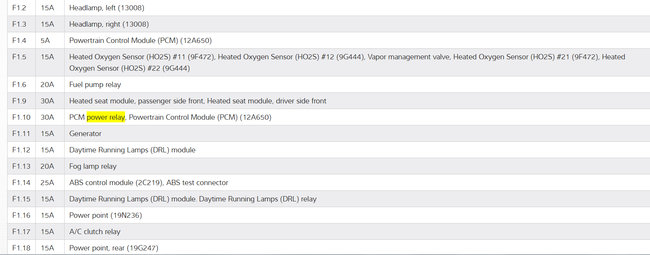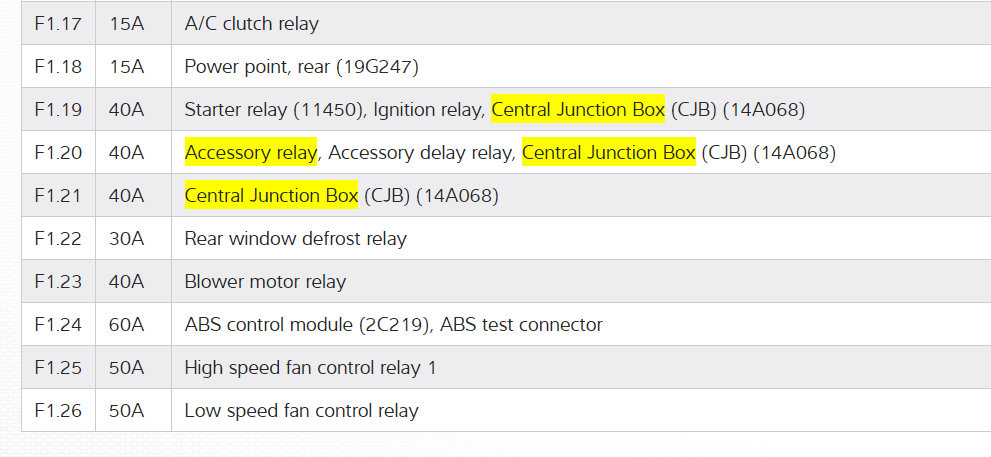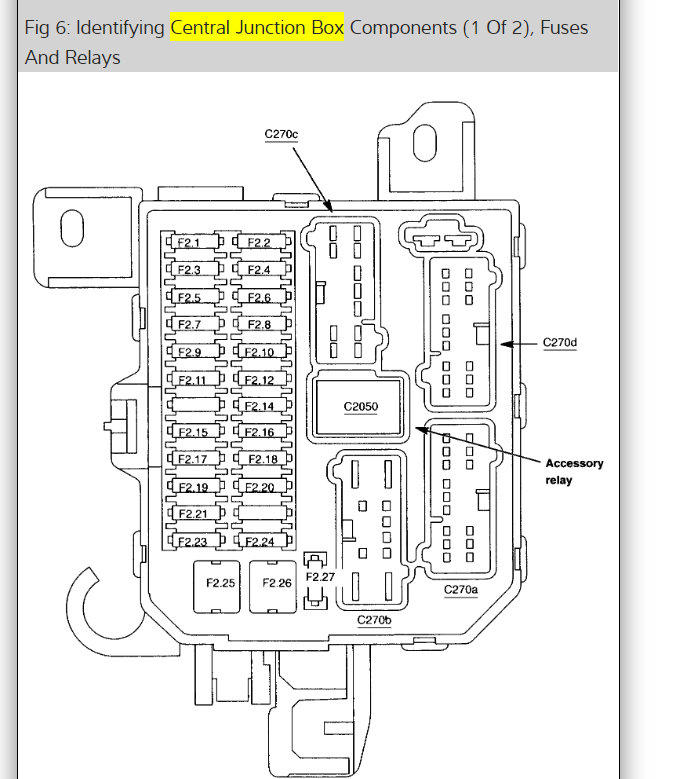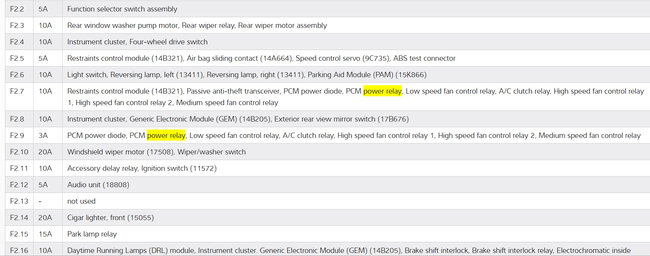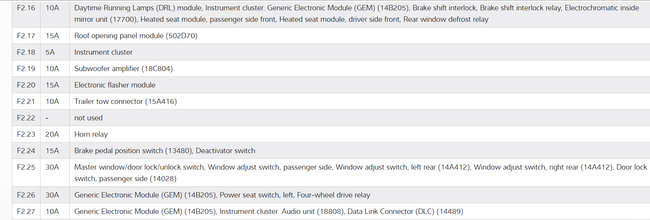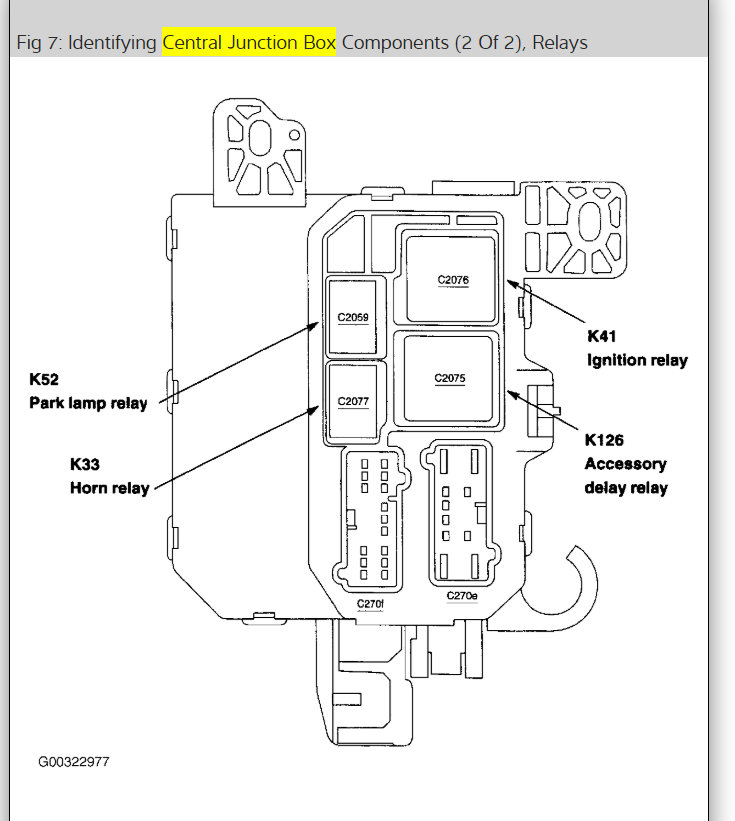Welcome to 2carpros. Com
Here are the directions from Alldata for removal and replacement. The attached pictures correlate with these directions.
_________________________________________________
TIMING DRIVE COMPONENTS
Timing Drive Components
Removal
NOTICE: During engine repair procedures, cleanliness is extremely important. Any foreign material, including any material created while cleaning gasket surfaces that
enters the oil passages, coolant passages or the oil pan, can cause engine failure.
NOTICE: Failure to verify correct timing drive component alignment will result in severe engine damage.
1. Remove the engine front cover.
2. NOTICE: This pulse wheel is used in several different engines. Install the pulse wheel with the keyway in the slot stamped "25-25-34Y-30M"(color blue).
Pic 1
Remove the ignition pulse wheel.
Pic 2
3. Install the damper bolt.
4. NOTE: LH shown, RH similar.
Pic 3
Remove the LH and RH spark plugs.
Pic 4
5. Rotate the crankshaft clockwise to position the crankshaft keyway in the 11 o'clock position and position the camshafts in the correct position. This will position the number one cylinder at top dead center (TDC).
- Verify that the camshafts are correctly located. If not, rotate the crankshaft one additional turn and recheck.
Pic 5
6. Rotate the crankshaft clockwise 120 degrees to the 3 o'clock position to locate the RH camshafts in the neutral position.
Pic 6
7. Verify that the RH camshafts are in the neutral position.
Pic 7
8. Remove the RH timing chain tensioner arm.
1. Remove the bolts.
2. Remove the tensioner.
3. Remove the tensioner arm.
Pic 8
9. Remove the bolts, RH timing chain guide and the timing chain.
Pic 9
10. Rotate the crankcase clockwise 600 degrees (1-2/3 turns) to position the crankcase keyway in the 11 o'clock position. This will position the LH camshafts in the neutral position.
Pic 10
11. Verify the LH camshafts are in the neutral position.
Pic 11
12. Remove the LH timing chain and tensioner arm.
1. Remove the bolts.
2. Remove the tensioner.
3. Remove the tensioner arm.
Pic 12
13. Remove the LH timing chain and timing chain guide.
Pic 13
14. Remove the damper bolt and the crankshaft sprockets.
Installation
1. NOTICE: Failure to verify correct timing drive component alignment will result in severe engine damage.
Pic 14
Install the crankshaft sprocket with the timing mark facing out.
2. NOTE: LH shown, RH similar.
Pic 15
Position the chain tensioner in a soft-jawed vise.
3. NOTE: LH shown, RH similar.
Pic 16
Hold the chain tensioner ratchet lock mechanism away from the ratchet stem with a small pick.
4. NOTICE: During tensioner compression, do not release the ratchet stem until the tensioner piston is fully bottomed in its bore or damage to the ratchet stem will result.
Pic 17
Slowly compress the timing chain tensioner.
5. Retain the tensioner piston with a 1.5 mm (0.05 in) wire or paper clip.
Pic 18
6. If timing marks in the timing chains are not evident, use a permanent-type marker to mark the crankshaft and camshaft timing marks on the LH and RH timing chains.
1. Mark any link to use as the crankshaft timing mark.
2. Starting with the crankshaft timing mark, count 29 links and mark the link.
3. Continue counting to link 42 and mark the link.
Pic 19
7. Position the LH timing chain and guide and install the bolts.
- Align the marks on the timing chain with the marks on the camshaft and crankshaft sprockets.
- Tighten to 25 Nm (18 lb-ft).
Pic 20
8. Install the LH timing chain tensioner arm and the LH timing chain tensioner.
1. Install the tensioner arm.
2. Position the tensioner.
3. Install the bolts.
-Tighten to 25 Nm (18 lb-ft).
Pic 21
9. Install the crankshaft damper bolt and rotate the crankshaft clockwise 120 degrees until the crankshaft keyway is in the 3 o'clock position.
Pic 22
10. Verify that the RH camshafts are correctly positioned.
Pic 23
11. Install the RH timing chain and chain guide and install the bolts.
- Align the marks on the timing chain with the marks on the camshaft and crankshaft sprokets.
- Tighten to 25 Nm (18 lb-ft).
Pic 24
12. Install the RH timing chain tensioner and tensioner arm.
1. Install the tensioner arm.
2. Position the tensioner.
3. Install the bolts.
- Tighten to 25 Nm (18 lb-ft).
13. Remove the LH and RH timing chain tensioner piston retaining wires.
14. Rotate the crankshaft counterclockwise 120 degrees to top dead center (TDC).
15. NOTICE: Failure to verify correct timing drive component alignment will result in severe engine damage.
Pic 25
Verify the timing with the following steps.
1. There should be 12 chain links between the camshaft timing marks.
2. There should be 27 chain links between the camshaft and the crankshaft timing marks.
3. There should be 30 chain links between the camshaft and the crankshaft timing marks.
Pic 26
16. Remove the crankshaft damper bolt.
17. NOTE: LH shown, RH similar
pic 27
Install the LH and RH spark plugs.
-Tighten to 15 Nm (11 lb-ft).
18. NOTICE: This pulse wheel is used in several different engines. Install the pulse wheel with the keyway in the slot stamped '20-25-34Y-30M" (color blue).
Pic 28
-Install the ignition pulse wheel.
19. Install the engine front cover.
_______________________________________________________
Let me know if this helps.
Take care,
Joe
Images (Click to make bigger)
Wednesday, August 12th, 2020 AT 1:34 PM
